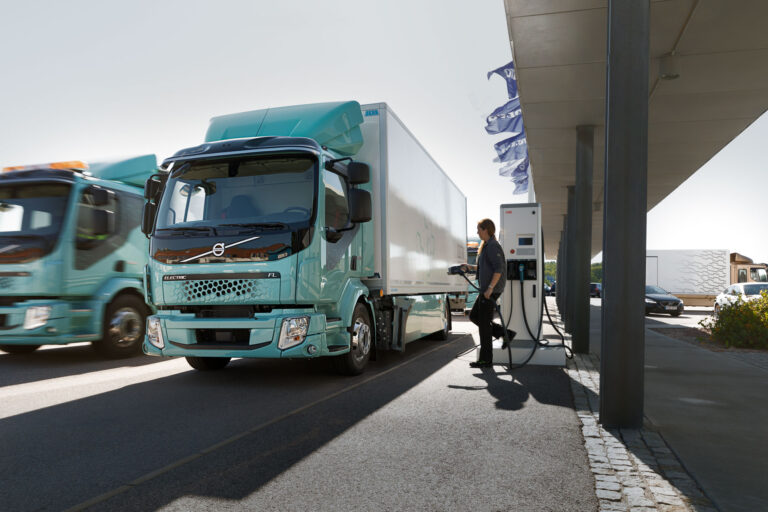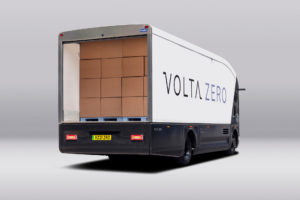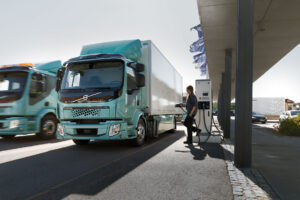2021 has been a big year for electric trucks. Logistics Manager looks at some powerful developments
The massive acceleration in online shopping and subsequent e-commerce deliveries has led to what some report was a 25% rise in the latter last year alone. And it is predicted that 10%-20% of the recent increase will continue after the pandemic.
A recent McKinsey report revealed this demand for e-commerce delivery will result in 36% more delivery vehicles in inner cities by 2030. And without effective intervention, urban last-mile delivery emissions and traffic congestion are on track to increase by more than 30% in the top 100 cities globally. This is something the planet could do without.
Companies and cities are therefore ramping up commitments to make emissions-free deliveries and there are some exciting start-ups in the space, including Rivian, Arrival and Nikola, although the ‘big boys’ in the CV world are also making great gains.
However, following the UK’s ban on the sale of new diesel and petrol HGVs by 2040 (as part of its efforts to decarbonise the transport sector), this electric revolution needs to gather pace – and gather pace much more quickly.
Out in the field of electric dreams
Any investment in a new truck must pay for itself, but what a lot of customers are currently asking themselves is – given the landscape is changing in the not-too-distant future – which truck do we buy? Traditional diesel or fully electric?
Developments in the commercial vehicle sector are seemingly heading in the direction of electric drive systems. But, according to Karin Rådström from Daimler Truck (pictured below), there is no one-size-fits-all – no silver bullet. “We are following a dual-electrification strategy based on battery and fuel cell-electric trucks,” she reveals. “But there is more action needed – in terms of infrastructure and a reliable regulatory framework.”

The fully electric and locally CO2-neutral eActros for heavy distribution haulage was unveiled in June 2021 and went into full-scale production in Wörth in October. It will be followed in the second half of 2022 by the eEconic for municipal use. From 2024, the eActros LongHaul will be ready for series production and 2027 will see the first GenH2 Trucks with hydrogen-based fuel-cell drive system roll off the production line on their way to customers.
For Rådström, the choice will be simple: the lighter the load and the shorter the distance, the more battery-electric operations will be favoured. The heavier the load and the longer the distance, the more likely the fuel cell will be the means of choice.
Four near-series battery-powered eActros vehicles have been tested with customers on the continent and the reaction to their performance has been positive. Rainer Schmitt is the Managing Partner of Logistik Schmitt and has been putting the eActros through its paces since July 2019. “It has reliably travelled around 70,000km to date in all types of weather, carrying a total of more than 137,000 load units on just under 7,000 trips. That’s more than 40,000 tonnes of freight. We are very delighted the prototype is now being replaced by a near-series eActros.”
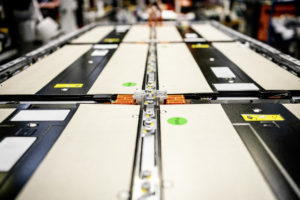
Wim Roks, meanwhile, is the Fleet Manager at Netherlands-based Simon Loos and has been trialling an eActros equipped with a refrigerated box for the Albert Heijn supermarket chain. “We naturally place great emphasis on sustainability in our strategy,” says Roks. “Our eActros transports goods from Albert Heijn’s regional DC in Delfgauw and supplies stores in cities such as Rotterdam, The Hague and Delft. The eActros will run seven days a week, covering up to 300km every day in a locally CO2-neutral operation.”
Born to be electric
Generating plenty of headlines recently, Volta Trucks has been at the forefront of what appears to be an accelerating transition to electrification. The company already boasts the Volta Zero 16-tonne battery-electric truck and has 7.5-tonne, 12-tonne and 19-tonne models in the pipeline.
In September, the Stockholm-based start-up – which also operates in the UK – announced its first trucks will be made by Steyr Automotive under contract starting in late 2022 at a former MAN truck plant in Austria. This is a smart move for Volta Trucks. Several electric startups have decided to hand that over to operators that already build vehicles at scale, primarily due to the teething problems that Tesla went through when ramping up production of its Model 3 sedan in 2017/2018.
DB Schenker sees start-ups rapidly becoming scale-ups as a very exciting part of the decarbonisation of the sector. “Many manufacturers have announced plans to move their entire product portfolio to electric vehicles by 2030 or 2040,” says Tariel Chamerois, CSR & Sustainable Development Director at DB Schenker in France. “We advocate for not waiting too long to jump on the bandwagon – because it is already moving faster and faster. With new pollution-control regulations in Europe and the rest of the world, more and more cities and regions are on the way to adopt Low Emission Zones (LEZs), banning the most polluting lorries, coaches, buses and taxis from the streets entirely.”
DB Schenker is keen to transition as quickly as possible to the electric truck space. “The reality is that there is a very serious issue of public health and climate change,’ Chamerois continues. “Poor air quality will remain an issue in European cities as atmospheric pollution will continue to have a detrimental impact on human health (causing more than 400,000 premature deaths in Europe per year).
“Volta is starting from scratch as a pure electric player and that makes the difference,” Chamerois notes. “Its 16 tonne Volta Zero corresponds to our needs in certain user cases, but we’re watching with interest the upcoming versions in 7.5 and 19 tonnes.”
“The drive to electrification is spreading like wildfire, and the demand is skyrocketing everywhere,” believes Kjell Walöen, Chief Technology Officer at Volta Trucks (above on the left). “We’ve had requests for vehicles from all corners of the world already. We are designing a global roll-out plan that will be possible to do with minimised risk and cost and at maximum speed. If all goes to plan, we will be serving most of the major markets throughout the world within a few years.
“We decided to go for the city centre distribution and last-mile segment partly because it seemed untouched and partly because we saw an immense demand for clean, silent trucks in our cities,” adds Walöen of the company’s niche. “And we soon realised the opportunity that the electric powertrain provided to make a step change in safety and driver attractiveness. To capture the early mover advantage, we set off very quickly. It took us just a few months from the start of concept development until the building of the demonstrator had started, and just another six months until it was finished – all during the peak of the pandemic!”
The green revolution coming to last-mile deliveries
Re:volt, a newly unveiled electric delivery van, caught the eye of Logistics Manager this month after being launched by Sweden’s Clean Motion. What sets Re:volt apart from its contemporaries is its solar panel roof, which means it is constantly charging in daylight hours. “We are not alone in integrating solar panels into vehicles,” admits Göran Folkesson, CEO of Clean Motion (pictured below). “What is unique is the energy efficiency of our vehicles, which means that the solar-roof can make them self-sufficient in energy. It also means that with only 40kg of batteries, we can offer a range of 280km, which will suit areas where the sun is not a reliable energy source.

“It’s not rocket science!” Folkesson tells Logistics Manager. “The laws of motion are well known and it is clear that low weight is the key for energy efficiency. Surprisingly, we find ourselves practically alone in the field of energy-efficient EVs. The incumbents are occupied putting larger and larger batteries into the vehicles, which results in an increase of vehicle weight.”
Eventually, when the fleet goes from a penetration of single-digit-percent to almost 100%, that will
be the real challenge for society and the auto industry, believes Folkesson. Here, Re:volt has a great advantage as it solves many transport missions with a minimal need for charging.
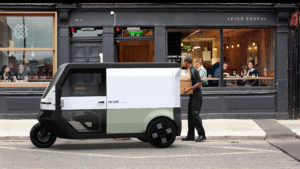
“The market for environmentally friendly last-mile deliveries is huge and rapidly growing, but the range of vehicles that can really replace the old fossil-fuelled vans is not that exciting,” he adds. “We want to change the image of what a small EV can do.”
Re:volt will start rolling out at the end of 2022. Right now, it is looking for companies with diversified transport needs that want to be involved and to fine-tune the last details of the platform, the goal being to create a customer offering for the European market. As with Zbee, Clean Motion’s three-wheel vehicle for urban mobility, the plan is to offer Re:volt for local licensed manufacturing in emerging markets globally.
E-trucks may take off sooner than you think
Swedish giant Volvo Trucks is aiming for its entire product range to be fossil-free by 2040 – its target for 2030 is for 50% of its global truck sales to be electric. “It may sound as an unrealistic target, but the switch to electric vehicles is set to go much faster than most have anticipated,” believes Lars Mårtensson (pictured bottom), Environment & Innovation Director with the company.
At the start of October, Volvo received an order for 100 FM Electric trucks from DFDS, a major player in European shipping and logistics. The FM Electric can carry a weight of 44 tonnes (GCW) and has a range of up to 300km.
Granted, an electric truck has a higher initial price tag than a conventional vehicle today, but Mårtensson says the low number of moving parts in an electric engine means they often have longer life-cycles and need less maintenance.
“Ongoing investment in the renewable energy sector is bringing down costs of generating electricity to the point where running a truck on electricity will be a fraction of the cost of diesel,” he adds.
As demand for electric vehicles has shot up, battery innovation is also accelerating. Lighter, lithium-ion batteries are about a third of the weight and half the volume when compared to lead-acid. And they are becoming even lighter and more powerful as the tech improves. “Even more gains could be made with solid-state batteries,” Mårtensson notes. “These charge faster, are safer and deliver up to twice the battery density of today’s lithium-ion batteries.”
Today, charging an electric truck for shorter-range tasks can be easily done overnight. Although infrastructure for fast-charging trucks is still small, it is expanding as cities, DCs, car-makers and fuel stations look to cater to the emerging demand. And new technologies including smart chargers and smart batteries are making ultra-fast charging possible. “New discoveries are also demonstrating that charging speeds will be increased drastically by improvements of lithium-ion batteries,” says Mårtensson.
As the price of electric vehicles goes down, choosing electric could become more than simply a question of sustainability and cost. Electric trucks are also proving popular with drivers because they generate fewer vibrations than traditional diesel vehicles. They are easier to manoeuvre and park, making them well-suited to urban driving and deliveries. As a low-carbon option with no exhaust emissions, electric trucks are proving popular with companies that want to operate more sustainably.
The switch to electric vehicles could happen more quickly than we imagined, even a few years ago. At least there are signs indicating this progress. And electric trucks are already rolling onto our streets in real operation.


